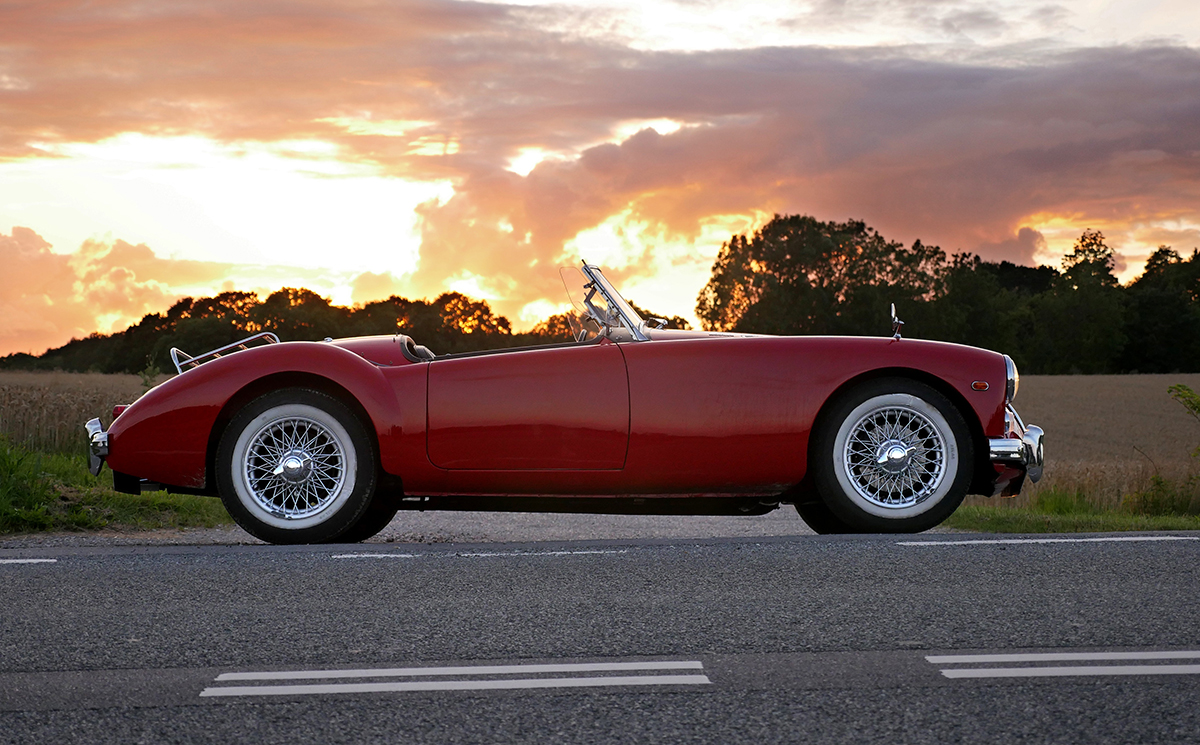
Austin-Healey Born with Model 100
Austin-Healey 100 – a truly special sports car
In 1952, the Austin division of the British Motor Corporation (BMC) established a joint venture with the Donald Healey Motor Company and created Austin-Healey. The much-revered sports car company would design and manufacture cars until 1972 when the 20-year agreement between Healey and Austin came to an end.
The first Austin-Healey sports car was something special. Donald Healey had built a single Healey Hundred for the 1952 London Motor Show, which caught the eye of Leonard Lord, the managing director of Austin. The Austin A90 had been failed to ignite the imagination of the motoring public and Lord was searching for a successor. At the same time, Healey had the burgeoning post-war US market in mind. Jaguar and MG were already having great success in the US and Healey saw huge opportunities for another British designed sports car. Lord and Healey agreed to work together and build in quantity. The new sports car was called the Austin-Healey 100 in recognition of the car’s ability to reach 100 mph. The 100 was also the first of three models that were later defined as the ‘Big Healeys’ (Austin-Healey 100, 100-6 and 3000) to distinguish them from the much smaller Austin-Healey Sprite.
The 100 was just over 3.8 metres long and 1.5 metres high. The car sat low on the road with a height of just over 1.2 metres. Inside the long bonnet was a 2660 cc I4 engine producing 90 bhp.
The series BN1 was released as the first 100 in 1953 with a price tag of £1,063 including taxes. The car had a three-speed transmission with overdrive on second and top. On release, The Motor magazine tested the new sports car and reported a top speed of 106 mph with an acceleration of 0-60 mph in 11.2 seconds.
In 1955, Austin-Healey released the series BN2. The new car had four-speed manual transmission, slightly modified and larger front wheel arches, and a different rear axle. It was also the first to be available, as an option, in two-tone paint. The BN2 proved very popular with 200 cars being produced each month in early 1956, with 150 exported to California, USA.
Austin-Healey also released a high performance 100 BN2 called the 100M. The engine was boosted to produce 110 bhp at 4500 rpm. Other modifications included a stiffer front suspension, bonnet gained louvres and a bonnet belt.
Along with the BN1 and BN2, Austin-Healey produced the 100S for racing. Reduced weight was important and the variant had a lighter aluminium body and aluminium cylinder head. Also, bumpers and the hood (convertible top) were removed, the front grille was reduced in size and the windscreen was made from plastic. The boosted engine produced 132 bhp at 4700 rpm. The 100S was also the world’s first production car to feature both front and rear disc-brakes. 50 production cars were built.
Sadly, a 100S driven by Lance Macklin was involved in the 1955 Le Mans disaster. The crash started when Jaguar driver Mike Hawthorn cut in front of the Austin-Healey driver to reach his pit stop, prompting Macklin to swerve into the path of the passing Levegh driving a Mercedes-Benz 300 SLR. Levegh rear ended Macklin at high speed, overriding Macklin’s car and launching his own car through the air. Levegh struck a protective dirt berm at 200 km/h (125 mph), disintegrating and igniting his car, throwing him onto the track where he was instantly killed, and sending large pieces of flaming debris cartwheeling over the berm and into the packed grandstand—including the engine block and hood.
Between 1953 and 1956, 14,634 Austin-Healey 100s were produced.
An Austin-Healey 100 can be purchased for between £50,000 and £120,000 depending on the condition (2019). The classic 100 is very popular with enthusiasts in the US.
At the start of the project, Austin-Healey asked SMITHS to design and manufacture the gauges. Four gauges were produced, mounted either side of the steering wheel column. From left to right, the gauges were:
CAI is working with A H Spares of Southam in Warwickshire, UK on a reintroduction programme of SMITHS Austin-Healey instruments using the original designs and drawings.
For further information on gauges for Austin-Healey or any classic car, please contact us on:
Email: [email protected]
Phone: +44 (0) 1639 732200